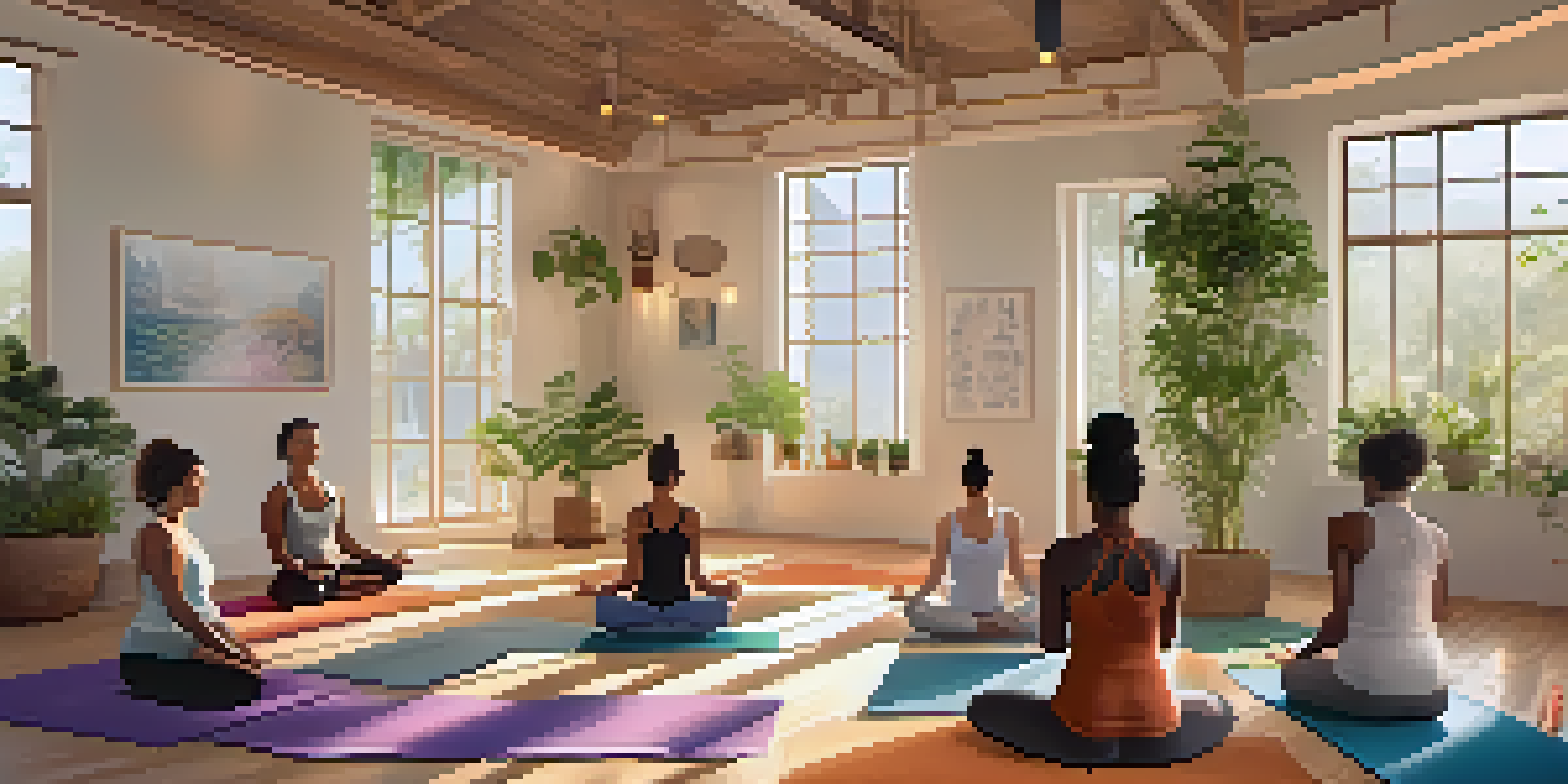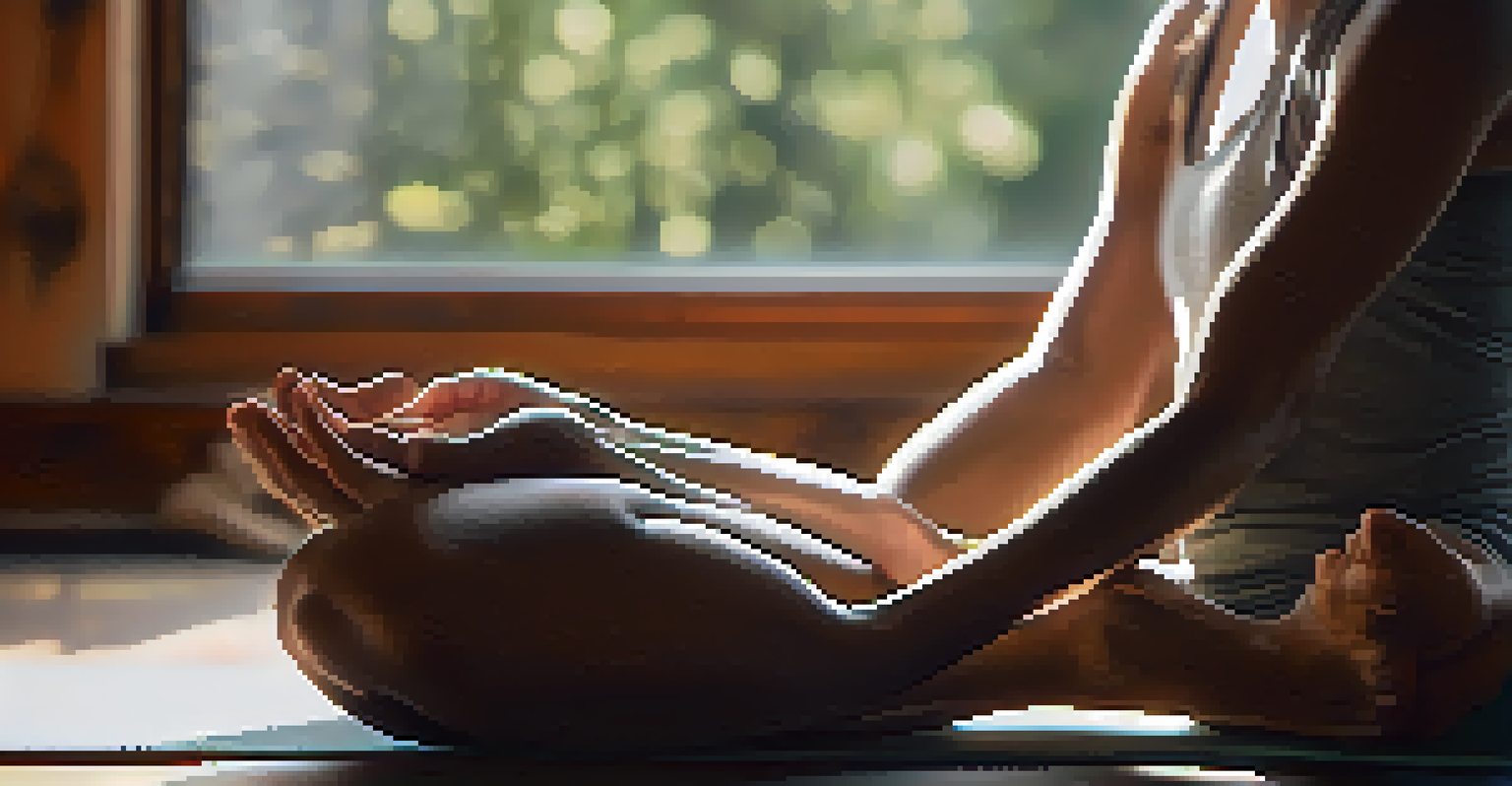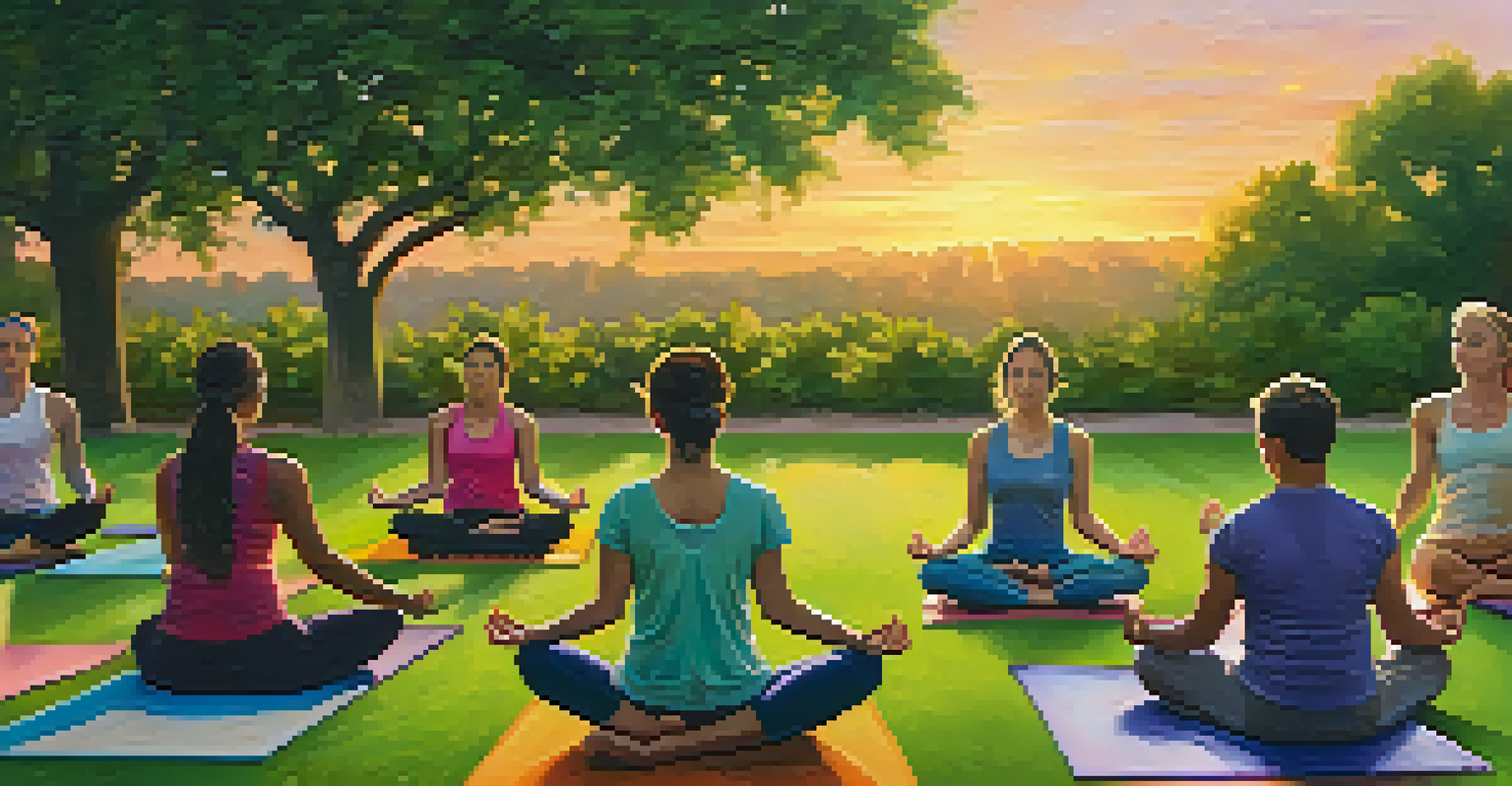Creating a Safe Space: Yoga for PTSD Survivors

Understanding PTSD and Its Impact on Lives
Post-Traumatic Stress Disorder (PTSD) can significantly alter a person's life, bringing about feelings of anxiety, fear, and isolation. It often stems from traumatic experiences, which can range from combat to personal loss. Understanding PTSD is crucial, as many survivors may struggle to articulate their feelings or find effective coping mechanisms.
The greatest glory in living lies not in never falling, but in rising every time we fall.
The symptoms of PTSD can manifest in various ways, including flashbacks, nightmares, and emotional numbness. This can create a barrier to experiencing joy or connection with others, leading many survivors to retreat into themselves. It's important to recognize these struggles as valid and worthy of support.
Creating a safe space for those dealing with PTSD means providing an environment where they can start to heal. This is where yoga comes into play, offering a gentle pathway towards self-discovery and emotional release, helping survivors reconnect with their bodies and minds.
The Role of Yoga in Healing Trauma
Yoga is not just about physical postures; it’s a holistic practice that integrates body, mind, and spirit. For PTSD survivors, yoga can serve as a powerful tool for healing, allowing them to process trauma in a supportive setting. It encourages mindfulness, which helps individuals stay present and grounded amidst overwhelming emotions.

Through breathwork and movement, yoga facilitates the release of pent-up tension and stress that can accompany trauma. This therapeutic aspect can be particularly beneficial for those who find traditional talk therapy challenging. As survivors engage with their bodies, they may find new ways to express and understand their emotions.
Yoga as Healing for PTSD
Yoga offers a holistic approach for PTSD survivors, integrating body, mind, and spirit to facilitate emotional release and self-discovery.
Moreover, the community aspect of yoga fosters connection and support. Whether in a group class or one-on-one sessions, survivors can feel a sense of belonging, which is invaluable in their healing journey. This shared experience can help diminish feelings of isolation and promote empathy among participants.
Creating a Safe Space for Yoga Practice
Creating a safe space in a yoga setting is fundamental for those with PTSD. This means ensuring that the environment is welcoming and free from judgment, allowing participants to feel comfortable exploring their emotions. Elements like soft lighting, calming scents, and soothing music can enhance this atmosphere.
Your present circumstances don't determine where you can go; they merely determine where you start.
Instructors play a crucial role in establishing safety. They should be trained in trauma-informed practices, which means understanding the needs and triggers of PTSD survivors. By offering modifications and encouraging personal boundaries, teachers can help participants navigate their practice with confidence and ease.
It’s also important to communicate the intention behind each session. Clear explanations about what to expect can alleviate anxiety and empower participants to engage fully. The goal is to create a nurturing space where survivors can feel secure enough to explore their vulnerabilities.
Mindfulness: A Key Component of Yoga for PTSD
Mindfulness is a powerful tool in yoga that encourages participants to focus on the present moment. For those with PTSD, this practice can help them detach from intrusive thoughts and memories that often accompany their condition. By anchoring themselves in the here and now, individuals can begin to regain a sense of control over their minds and bodies.
In yoga, mindfulness can be cultivated through breath awareness and intentional movements. Practitioners learn to observe their thoughts without judgment, fostering a sense of acceptance. This shift in perspective can be liberating, allowing survivors to recognize that they are not defined by their trauma.
Creating Safe Spaces in Yoga
Establishing a nurturing and trauma-informed environment is essential for participants with PTSD to feel secure and supported during their practice.
Integrating mindfulness into yoga practice can also enhance emotional resilience. As participants become more aware of their feelings, they can better manage stress and anxiety. This newfound awareness is a vital step towards healing, enabling survivors to respond to life's challenges with greater clarity and composure.
The Power of Breathwork in Trauma Recovery
Breathwork is a fundamental aspect of yoga that can be particularly beneficial for PTSD survivors. Controlled breathing techniques help calm the nervous system, reducing symptoms of anxiety and panic. As individuals learn to regulate their breath, they can also cultivate a deeper connection to their bodies.
Deep, intentional breathing can trigger the relaxation response, counteracting the fight-or-flight reaction often experienced by those with PTSD. This practice not only promotes physical relaxation but also encourages emotional release, allowing survivors to process their experiences without becoming overwhelmed.
Incorporating breathwork into yoga sessions can also foster a sense of empowerment. Survivors learn that they have the ability to influence their emotional state through their breath. This realization can be a transformative experience, helping them reclaim agency over their own healing journey.
Building Community: Connection Through Shared Experience
A significant benefit of yoga for PTSD survivors is the opportunity to build community. Sharing a space with others who have faced similar challenges can create a profound sense of understanding and support. This communal aspect can help survivors feel less alone in their journey, fostering connections that extend beyond the yoga mat.
Group classes provide a unique environment for participants to share their experiences, if they choose to do so. This collective healing can encourage empathy and compassion, allowing individuals to witness the strength of others. These connections can be incredibly validating, reinforcing the idea that healing is possible.
Community Support in Healing
Shared experiences in yoga classes foster a sense of belonging and understanding among PTSD survivors, enhancing their healing journey.
Moreover, community support can enhance accountability and motivation. When participants share their journeys, they inspire one another to continue showing up for themselves. This sense of belonging can be a powerful catalyst for transformation, reinforcing the idea that they are not alone in their healing process.
Resources and Support for Yoga Practitioners
For those interested in exploring yoga as a healing modality for PTSD, numerous resources are available. Local studios may offer specialized classes designed for trauma survivors, providing a safe and supportive environment. Online platforms also host virtual classes, making it more accessible for those who prefer practicing at home.
Additionally, many organizations focus on integrating yoga into mental health treatment. These programs often provide training for instructors in trauma-informed practices, ensuring they can effectively support survivors. Participants may also find workshops or retreats specifically designed to address trauma through yoga.

Lastly, connecting with mental health professionals who understand the benefits of yoga can be invaluable. Therapists may recommend yoga as a complementary practice to traditional therapy, creating a holistic approach to healing. By exploring these resources, survivors can find the support they need on their journey towards recovery.